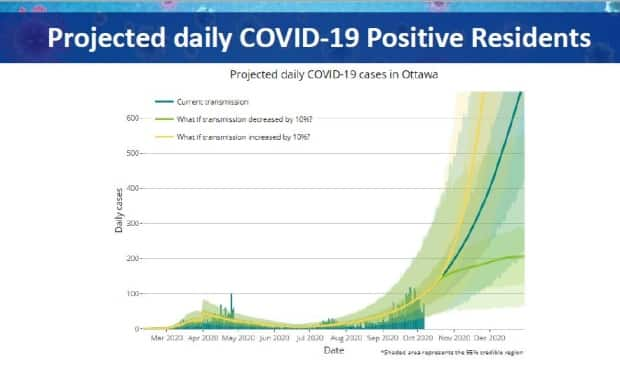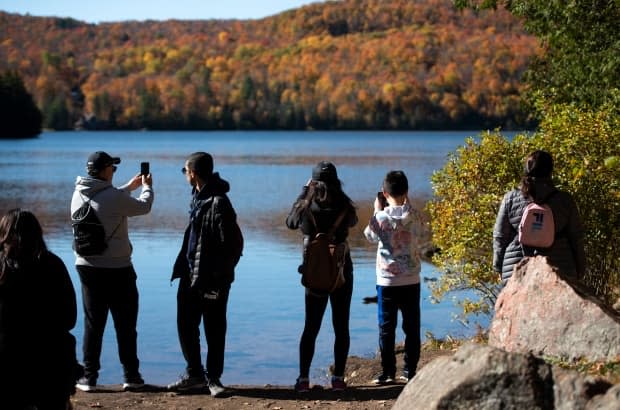Highest COVID-19 rate in Ontario? That's on us, Ottawa

We like to think of ourselves as rule followers. A government town made up largely of bureaucrats dutifully working from home since the start of this pandemic, we generally respect process and authority.
So it came as a shock to many to be told Wednesday that Ottawa has the worst per-capita rate of COVID-19 cases. Worse, even, than Toronto.
"Why are our cases so high?" asked a flabbergasted Coun. Catherine McKenney. "I just, I can't understand any rationale for that."
The short answer? Doesn't look like Ottawans are as rule-abiding as we give ourselves credit for.
Numbers don't lie
Consider the data.
The rate of infection is calculated using provincial data for each city, expressed as a number of cases per 100,000 residents. Last week, Ottawa had 70 cases per 100,000 people, while Toronto had 57. The last two weeks put together: Ottawa had about 132; Toronto had 115.
As we know, hospitalizations have almost doubled in about three weeks, with a quarter of new patients less than 65 years old.

The poop measurements are showing an alarming trend in the wrong direction.
Measurements of the virus in the city's wastewater show that COVID-19 cases could be growing exponentially in the community. At the current rate of transmission, Ottawa Public Health (OPH) forecasts more than 600 new cases per day by December.
Numbers don't answer all the questions
Numbers don't tell the whole story.
Toronto's public health officials identified 44 per cent of community outbreaks as occurring in restaurants, bars and entertainment venues. But OPH hasn't declared an outbreak at one of these types of businesses.
And that's why the city's business associations demanded the province provide more evidence to justify the closures imposed over the long weekend — a demand that council voted to support on Wednesday.
Nothing wrong with asking for more information — indeed, we should be holding all public officials accountable for every decision they make, especially when those decisions have such severe consequences for so many.
During a three-hour session at council Wednesday, Etches provided a rationale for why the province closed these businesses, a decision that she eventually supported after her plea from last month to only consort with people from our own households clearly wasn't heeded (again, see data).
For one thing, eight per cent of people who test positive say they've been in a restaurant or bar in the past two weeks.
Because it can be difficult to pinpoint exactly where someone picked up the virus, Etches hasn't declared an outbreak at a restaurant or bar, but that doesn't mean that transmission isn't happening in these venues.
As she told Coun. Jan Harder: "What we know is that people who have tested positive for the virus have been in restaurants and bars while they've been infectious."
To which Harder snapped back: "Have they been in Costco or have they been at school or have they been at home?"
In other words, how do you know infected people are spreading the virus in the businesses that were shut down?
That appears difficult to answer conclusively.
However, according to Etches, there are studies now showing that someone who tests positive is three times more likely to have been to a restaurant, and four times more likely to have been to a bar, than a person of the same age who is COVID-19 negative. These are also places where people are not wearing masks in relatively close quarters, which poses a greater risk.
Finally, there's evidence "from other jurisdictions, where it's clear that … bars and restaurants do pose a risk of transmission," said Etches.
Open earlier, near Gatineau
Etches can't say for sure why Ottawa's case rate is the worst in Ontario.
Ottawa moved into Stage 3 reopening in mid-July, ahead of other large centres, which meant we were "ahead a couple of weeks in terms of the opportunity for the virus to be transmitted," she said. That early green light may also have made us a bit smug about our behaviour.
As well, COVID-19 doesn't recognize our provincial border of the Ottawa River.
"We're even larger than it seems because we're really one population with our ... neighbours in Gatineau," said Etches. "That increases the size of the population and it increases the opportunities for transmission as people move around."

But when it comes to coronavirus transmission, in addition to asking where, we also need to be asking who.
Places don't give us COVID-19.
We give it to each other, mostly by getting together with people outside our household — and not necessarily at a restaurant — by not wearing a mask, by going out with what we think are mild cold symptoms.
Ottawa, we have the highest rate of COVID-19 in the province, and that's on us.


